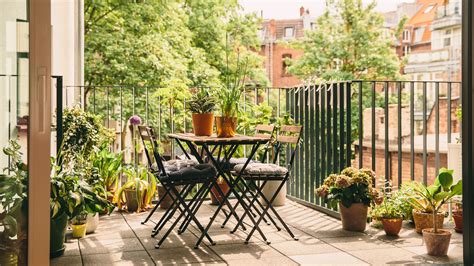Maximizing Yield in Balcony Gardens: Layout, Space, and Sunlight Optimization
With the increasing popularity of urban living, maximizing yield from small spaces, such as balcony gardens, has become an essential aspect of sustainable living. Whether you’re a seasoned gardener or a beginner, you can design a highly productive balcony garden by strategically using your space, optimizing sunlight, and selecting the right plants. This guide walks you through practical steps, from the initial layout to harvesting, to ensure your balcony garden thrives with minimal effort.
Key Concepts for Balcony Garden Design
To ensure a thriving balcony garden, you need to understand the core concepts that influence its success. These include layout, efficient use of space, selecting appropriate plants, and making the most of available sunlight. Additionally, using the right containers and applying specific growth tips for herbs, vegetables, and flowers is critical to achieving a higher yield.
Layout and Space Optimization
Your garden’s layout is the foundation of your balcony’s productivity. Vertical gardening, stacking containers, and using railing planters can help optimize limited space. Consider the following tips:
- Vertical gardening: Use wall-mounted pots or shelves to grow herbs or trailing plants like tomatoes.
- Hanging containers: Maximize space by hanging pots from ceilings or railings to grow smaller plants.
- Compact containers: Choose deep, narrow containers for root vegetables like carrots to make the most of vertical space.
Historical Context of Balcony Gardening
Balcony gardens have been a feature of urban homes for centuries, particularly in densely populated cities where access to land is limited. In ancient Roman cities, people cultivated small gardens on balconies to grow medicinal herbs and decorative plants. During World War II, balcony gardening surged in popularity with the “Victory Gardens” movement, where urban dwellers grew vegetables in small spaces to supplement food rations.
Current State of Balcony Gardens
Today, balcony gardening has evolved into a highly refined practice, with innovations like self-watering containers and compact soil mixes. Urban dwellers, in particular, find balcony gardening a practical way to grow organic produce and reduce their carbon footprint. With the right tools and techniques, even a small balcony can produce an impressive yield of vegetables, herbs, and even flowers, contributing to both mental well-being and food sustainability.
Practical Applications: Tips for Growing Herbs, Vegetables, and Flowers
When designing your balcony garden, choose plants based on available sunlight, container size, and your gardening goals. Here are some practical tips for growing herbs, vegetables, and flowers:
- Herbs: Rosemary, basil, thyme, and parsley thrive in small pots and grow well in sunny spots.
- Vegetables: Leafy greens like spinach and lettuce grow well in shallow containers, while tomatoes and peppers require deeper pots.
- Flowers: Marigolds and nasturtiums not only add color but also deter pests, making them excellent companions for vegetables.
Case Studies: Successful Balcony Gardens
Real-world examples of balcony gardens showcase how careful planning and attention to detail can result in exceptional yields. Here are a few case studies:
| Case Study | Space | Plant Choices | Yield |
|---|---|---|---|
| Urban Balcony in New York | 50 sq. ft. | Herbs, Tomatoes, Lettuce | 10 lbs of tomatoes, regular herb harvest |
| Small Balcony in Tokyo | 30 sq. ft. | Peppers, Radishes, Basil | 5 lbs of radishes, multiple pepper harvests |
| Spacious Balcony in Barcelona | 100 sq. ft. | Flowers, Spinach, Rosemary | Flower bouquets, consistent rosemary and spinach yield |
Stakeholder Analysis
Understanding who benefits from balcony gardens helps tailor your design. Key stakeholders include:
- Homeowners: Benefit from homegrown produce, contributing to healthier diets.
- Urban communities: Balcony gardens reduce urban heat and improve air quality.
- Environmental groups: Encouraging more people to grow their own food helps reduce the global carbon footprint of food transportation.
Implementation Guidelines
To get started with a high-yield balcony garden, follow these guidelines:
- Assess your space and sunlight exposure. Choose plants that thrive in the available conditions.
- Invest in quality containers with proper drainage to ensure healthy root growth.
- Use organic potting soil and consider adding compost or natural fertilizers for optimal plant health.
- Water regularly, ensuring that containers don’t dry out too much between watering sessions.
- Monitor for pests, and use companion planting or natural remedies to keep them under control.
Ethical Considerations
Balcony gardens raise a few ethical questions, including the sustainability of materials used (e.g., plastic containers) and water usage in urban environments. To mitigate environmental impact:
- Choose biodegradable or recycled materials for containers and garden tools.
- Implement water-saving techniques like drip irrigation or self-watering pots.
- Compost kitchen waste to minimize organic waste and nourish your garden.
Limitations and Future Research
While balcony gardening is a promising solution for urban agriculture, there are limitations to consider:
- Space limitations: Even with vertical gardening, not all crops can be grown in confined spaces.
- Weight concerns: Heavy containers may pose structural risks for balconies, especially in older buildings.
- Sunlight access: Not all balconies receive enough sunlight for high-yield gardening.
Future research could explore the use of artificial lighting to supplement natural sunlight, as well as the development of lightweight container solutions that minimize strain on building structures.
Expert Commentary on Balcony Gardening
Balcony gardening offers a practical, sustainable solution to urban food production, but achieving maximum yield requires a balance between space, sunlight, and plant selection. Experts agree that the future of balcony gardening lies in innovative container designs, water-efficient systems, and community-driven projects that share knowledge and resources among urban gardeners.
Ultimately, with proper planning and attention to detail, anyone can turn their balcony into a productive, green space that contributes to both personal well-being and environmental sustainability.


